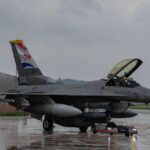Could the US, Japan, Australia and the Philippines all together stop China’s large and highly threatening Navy over the South China Sea in the Pacific? It is certainly a complex and likely often entertained question, given the worsening threat equation in the Pacific theater and the explosive growth of the Chinese Navy.
Military leaders from the four countries recently met in Manila to explore options for increased collaboration, interoperability and joint, multi-national deterrence operations. As part of the meetings, all four major allied Pacific powers conducted a submarine hunting P-8A maritime patrol over the South China Sea, according to an interesting Navy report.
“During the flight, they were able to observe the maritime environment and discuss ways to increase interoperability, preserve regional stability, and maintain a free and open Indo-Pacific,” the Navy report said.
Certainly leaders of these countries would regularly be inclined to discuss cooperation and interoperability in the Pacific, yet of greatest significance would be the interfaces, gateways and communications systems connecting the different militaries to one another.
While China may outnumber the US Navy in terms of sheer size, and perhaps only a fraction of the US Navy’s maritime combat power could be positioned in the Pacific at any one time, the collective effort of the US, Japan, Australia and the Philippines may indeed be positioned to thwart or destroy Chinese attacks, depending upon the level of networking, forward-positioned assets and speed of response time.
One way to support growing multi-national connectivity is through port visits and joint exercises, a reason why both Australian and US warships visited Manila at the same time.
“The meeting coincides with port visits by three of the partner navies to Manila: the landing helicopter dock ship HMAS Canberra (L02); the helicopter-carrying destroyer JS Izumo (DDH-183); and the amphibious assault ship USS America (LHA-6),” the Navy essay says.
Ultimately, an ability to stop any attempted Chinese takeover of disputed territories in the South China Sea would rely upon rapid response time, sufficient surveillance to “see” an attack in time, and rapid multi-national air and surface mobilzation.
Networked F-35s, Aegis & Amphibs
Three of the countries meeting to discuss corporations regarding security in the South China Sea are F-35 capable nations, something which certainly does enable a large degree of mulit-national, multi-domain networking. While Australia may not have the vertical take-off F-35B yet, it is an F-35 country. Its F-35s may not be able to launch from its Helicopter Landing Docks, however the Royal Australian Navy could forward-position F-35s in allied territory such as Japan, the Philippines or Guam. Also, Japan is both an Aegis-capable and F-35B military, meaning it can operate vertical take off and landing 5th-generation aircraft much like the US Navy’s USS America. This is extremely significant, as Japanese and US F-35s could work quickly to establish air superiority over the South China Sea should surveillance assets see threats in time for the aircraft to get there.
Of equal or greater significance, Japan and the US Navy could use Aegis radar and fire control to form a meshed threat stopping networking against China’s massive arsenal of ballistic missiles. Aegis ships can network with one another due to technical insertions and software upgrades to enable shared threat tracking information to cue interceptors and potentially see and “destroy” incoming Chinese ballistic missiles from safer stand-off ranges. Then, 5th-generation Japanese, Australian and US 5th-generation aircraft could go after the mobile ballistic missile launchers.
Source : WarriorMaven
















